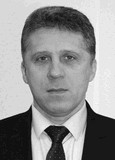ORGANIZATION OF A MACROCYCLE FOR THE TRAINING OF HIGHLY QUALIFIED FEMALE ATHLETES SPECIALIZING IN MODERN PENTATHLON
Keywords:
highly qualified female athletes, modern pentathlon, annual training cycle, planning, means.Abstract
Objective of the study was to develop and substantiate the structure of building a macrocycle for the training of highly qualified female athletes specializing in modern pentathlon.
Methods and structure of the study. The structure of building a macrocycle for the training of highly qualified athletes specializing in modern pentathlon has been developed, which includes a combination of basic training tools and the distribution of their volume, taking into account the specifics of the training of athletes in a given time period of the annual cycle. The scheme of the mesocycle of training of athletes, individualized in accordance with the biorhythmics of their body, is specified. The developed structure of training was tested in the training process of highly qualified athletes (n=6), masters of sports of international class, and its effectiveness was assessed by the magnitude of the increase in sports results and indicators in individual pentathlon disciplines compared to the previous year.
Results and conclusions. The structure of the macrocycle of training of highly qualified female athletes specializing in modern pentathlon has been developed, the effectiveness of which has been confirmed by the results of competitive activity. At the end of the first macrocycle, in comparison with the results of the previous year, in the combined relay race and the total amount of pentathlon points, statistical significance of differences was revealed (p<0.05). It is shown that when organizing the training process, one should take into account the individual characteristics of a particular athlete and rely on her leading motor abilities, which is most reasonable at the stage of the highest sports achievements.
References
Dryukov V.A. Struktura postroyeniya godichnogo tsikla v sovremennom pyatiborye [The structure of building an annual cycle in modern pentathlon]. Guidelines. Kyiv: Zdorovye publ., 1989. 36 p.
Lagoida V.G. Osnovy mnogoletney podgotovki v sovremennom pyatiborye [Fundamentals of long-term training in modern pentathlon]. Ufa: Bashgosuniversitet publ., 1996. 132 p.
Sevdalev S.V. Modelirovaniye sorevnovatelnoy deyatelnosti vysokokvalifitsirovannykh sportsmenov, spetsializiruyushchikhsya v sovremennom pyatiborye [Modeling of competitive activity of highly qualified athletes specializing in modern pentathlon Mir sporta. 2021. No. 2 (83). pp. 54-59.
Sevdalev S.V., Kozhedub M.S., Aleinik E.A. Individualizatsiya v podgotovke kvalifitsirovannykh sportsmenok, spetsializiruyushchikhsya v kompleksnykh vidakh mnogoboriy [Individualization in the preparation of qualified athletes specializing in complex types of all-around events]. 2021. No. 2 (125). pp. 31-37.
Skoblikov A.V. Ratsionalnaya struktura begovykh nagruzok kvalifitsirovannykh sportsmenov v sovremennom pyatiborye [Rational structure of running loads of qualified athletes in modern pentathlon]. PhD diss. Moscow, 2007. 110 p.
Shakhlina L.Ya.-G. Mediko-biologicheskiye osnovy sportivnoy trenirovki zhenshchin [Medico-biological foundations of women's sports training]. Kyiv: Nauk.dumka publ., 2001. 326 p.


